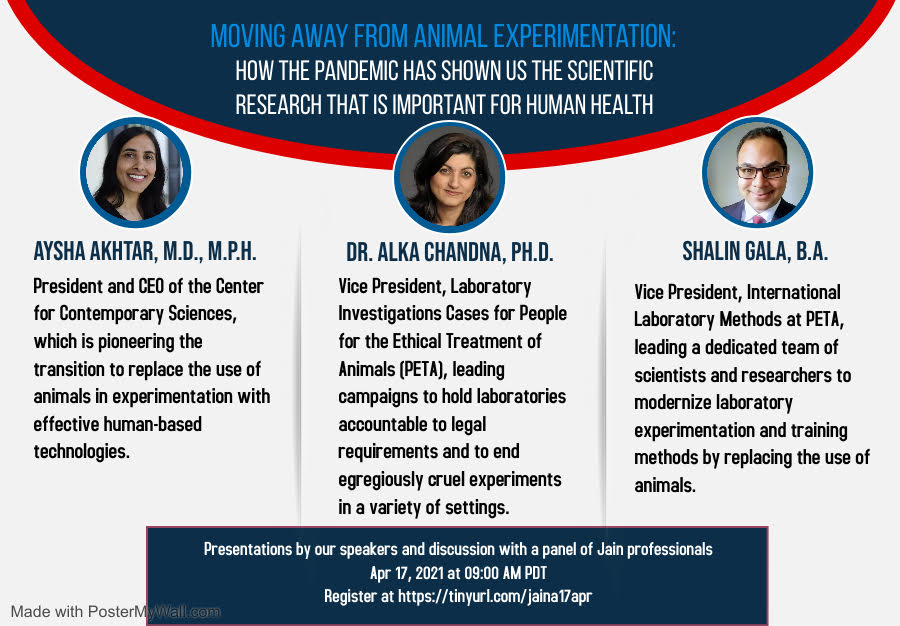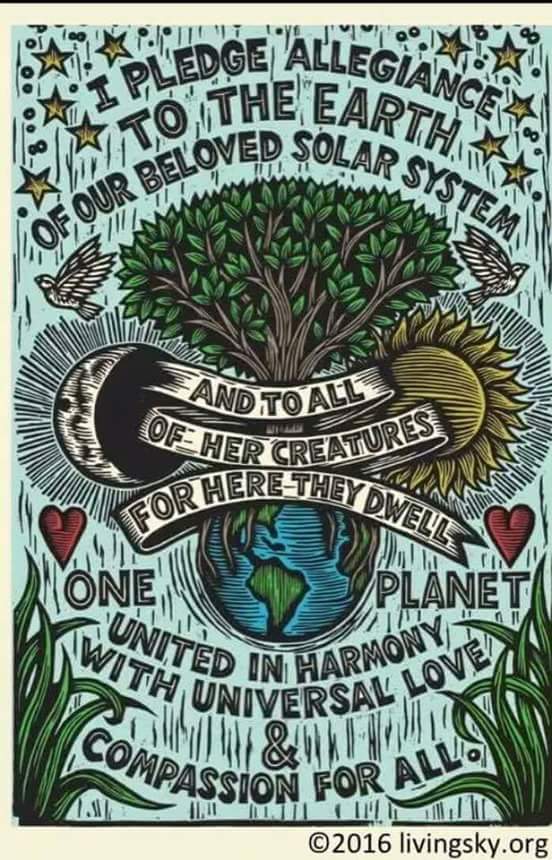
Categories
-
Recent Posts
-
Join 164 other subscribers
Our most recent webinar was titled “ Moving away from animal experimentation How the pandemic has shown us what scientific research is important for human health” with Dr. Alka Chandna (alkac@peta.org), Shalin Gala (shaling@peta.org) and Dr. Aysha Akhtar (aysha@contemporarysciences.org),and held on April 17, 2021.

Resources for Advocacy
Posted in Uncategorized, Webinar series

We have just posted the Jain declaration on the climate crisis as a new page. Please read and consider it and on this day of Samvatsari for Svetambar Jains, consider if you’d like to endorse it and make any commitments. There is an endorse button at the top of the page. Above for illustrative purposes only. This is not the pledge associated with the Jain declaration.
Sailesh Rao of Climate Healers places our going vegan as the #1 thing we can do for the plant.
The book Drawdown and its associated website gives details of solutions in all different sectors.
My co-author, Sudhanshu, also describes the top 8 items you can do to address the climate crisis. Continue reading
Posted in Activism, Environmental, Jain Philosophy, Paryushan, Uncategorized
This year at the JAINA convention, I spoke about having Ahimsak lifestyles for health. Not only does that mean vegan, but also climate friendly. I found a couple of articles today that draws a parallel between individual prevention of disease and prevention of climate catastrophe. It’s always harder for people to act to prevent harm than to react to harm that occurs. However, on this eve of Paryushan, it’s time for us to reflect and act in order to prevent widesspread himsa. Here is the article about prevention and another, associated with the picture, is about what we can do on a broader scale.

Posted in Activism, Environmental, Uncategorized
Our friend Barbara posted these tricks for making plant milk.
We have a Soymilk maker which makes the Soymilk much easier than what she’s posted but maybe her recipe is useful for those who don’t .
Trick #1 Xanthan gum
I love nut milks, they are nutritious, smooth and oh so tasty. Have you ever made a batch, marveled at its white creamy texture just to be so disappointed the morning after when, opening the fridge, you were greeted by an unappealing separated sludgy looking beverage?
It happened to me several times, close your eyes and shake before drinking, yes …but! Just adding ¼ tsp Xanthan gum to one liter of milk does the trick, your mil will not separate.
I strain the milk using a nut milk bag, place it I the blender one more time, add the xanthan gum and blend it on low for few seconds. Et voilà, no more surprises or shaking in the morning.
Trick #2 the nut butter
In a hurry, cannot peel those almonds? Adding two tablespoons of almond butter to 1 liter of water in a blender makes a delicious milk. I then add some little salt, maple syrup and my ¼ tsp xanthan gum. I experimented with hazelnut butter as well…delicious!
Trick #3: 1-2-3 Cashew
Another no time milk – Cashew milk does not need to be strained – ½ cup of raw cashews in 1 liter of water make a very smooth and creamy milk. Again, I add a little salt, vanilla and xanthan gum so it does not separate
Trick #4: No beany flavor soy milk
Soy milk is very nutritious, but when I started making it at home, I had a very hard time with its beany flavor. After experimenting a bit, I am set on the following method. While not quick, it yields very good results: creamy home-made soy milk without any beany flavor!
· Blanch 1 cup of beans for 10 minutes in boiling water + 1 TBS bicarbonate
· Soak the blanched beans for 8-10 hours in water + 1 TBS sodium bicarbonate
· Rinse the beans
· Blend the beans with 2 cups of boiling water in your Vitamix or another high-speed blender
· In a large pot bring 5 cups of water to a boil
· Place bean paste in the boiling water
· Simmer for few minutes stirring often. The milk will foam and at some point, rise in the pot. Turn off the burner and let it rest few minutes.
· Place your nut bag in a strainer on a clean pot. Pour the milk in and strain it with the help of a ladle to push on the bag as it’s still very hot.
· Cook the strained milk for about 10 minutes then let it cool. Stir it often during the first 15 minutes of cooling to break the skin that forms on top
· You can add salt, vanilla and sweetener or your choice. Transfer the milk into a container and refrigerate. I did not use any xanthan gum on this.
Posted in Healthy drinks!, Recipes, Uncategorized
Dr. Nandita Shah from Sharan gives a great introduction to veganism in this video
and this NYT article discusses the increased risk of heart disease in South Asian, linked both to those that eat a very traditional diet with lots of refined grains and saturated fat, and also a too Western diet with high fat meat and dairy. The type of whole foods, plant based diet that I, and Dr. Nandita and other vegan nutritionists and doctors recommend fit the recommendations to incorporate whole grains, vegetables and legumes into a mixed diet.
Posted in Health and Nutrition, Talks, Uncategorized
A note from Pranav:
Posted in General, JCNC, North American Jain centers, Uncategorized
Dr. Michael Klaper gave an excellent talk at the Jain Center of Northern California and has made a video specifically on the health and ethical problems with dairy consumption. Below is a screen shot. You have to click on the hyperlink here to access the talk which leads you to his website, containing all kinds of other excellent content!

“Dairy Doubts” (42-minutes)
00:00 : Dr. Klaper’s Introduction
00:44 : What we’re told about dairy products…
01:42 : The purpose of cow’s milk
02:56 : If you’re trying to lose weight…
03:54 : Reality check
04:33 : Estrogens in cow’s milk
12:26 : Dairy and prostate cancer
14:37 : Dairy and ovarian cancer
15:42 : Dairy and acne
17:09 : Plant-based diets in treatment of asthma
18:21 : Dairy and various medical conditions
19:18 : Cheese (congealed, fermented butterfat)
20:04 : “The Cheese Trap” by Neal Barnard, MD
20:27 : Where cow’s milk really comes from…
25:59 : Today’s commercial dairy industry
32:33 : Are you really that hungry?
33:22 : Healthy calcium sources
35:40 : Dairy and environmental pollution
37:00 : Look in the mirror…
37:25 : Delicious alternatives (in moderation)
38:21 : What about your bones?
38:49 : Osteoporosis is NOT primarily a calcium deficiency
39:33 : Healthy Bones
40:08 : Summary and Suggestions
42:31 : End
Thanks to Meredith Scheiner for her Time Map of this presentation
Enjoy!
Posted in Uncategorized
Big news in our community: The Jain Center of Southern California (JSSC) has decided to serve all vegan meals starting next year, with a transition period this year. Pravin uncle of the JAINA Education Committee gives us the inside story here .
As nicely described by Sagar of Young Jains here, the JSSC is the third Jain organization, after the Sri Digambar Jain Association in 2016 and Young Jains UK in 2017 to go vegan.
This is the first one in North America to go vegan. Fellow Jains have called on Northern California, Houston, Chicago and others to follow. Let’s hope they do. And with the JSSC hosting the next JAINA convention, we can hope that the biennial convention of North American Jains just might make a bold step that’s been a long time coming.
We Jains have a deep caring for all living beings and it’s an easy argument to eliminate dairy because we are saving the lives of dairy cows and their calves, egg laying hens and their chicks.

If we reflect on Earth Day, and the myriad ways that farming animals contributes to climate change, pollutes the water and air, uses inordinate amounts of water and land, we can see the less direct but still important benefits of going vegan. Books like Drawdown list plant rich diets as #4 in the list of most impactful steps to save the planet and all the living beings on it.
Posted in Environmental, Jain Philosophy, Uncategorized
Posted on Vegans In India facebook group by Saurabh K.
Are non veg eaters really cruel or just suffering from ‘Social Validation Bias’?
When we first moved to Singapore in 2016, we were looking for a place to rent close to the kids’ school. One such trip took us to a leafy condo block with nice low rise apartments and plenty of greenery.
The Property Agent, a local Chinese in his early 20’s, was quite helpful and showed us around a few apartments.
When we were done, as we were walking towards the exit, he suddenly held my hand and asked me to stop.
Surprised, I looked at him and he pointed me towards a snail just in front, who would have been crushed had I not been careful.
I thanked him for the gesture and bid him goodbye.
While on the way back, I kept on thinking of the incident. Why would a person, who by now might be enjoying a shark fin soup, or the local delicacy of Crispy Crabs where crabs are cruelly tied by legs for days until a patron selects them for meal, following which they are killed for food, be so sensitive towards a snail?
Such behaviour is widespread among us – we cannot see a puppy get hurt for example, and will happily pay for his treatment using a calf leather wallet.
I believe the reason is that we are all inherently non violent, but suffer from what Psychologists call ‘Social Validation Bias’. This is a basic human trait that makes even the most cruel or outlandish thing normal if sufficient number of others also do it.
When non vegetarians look around and see fellow non vegetarians who are doing just fine, not dropping dead due to the hormone filled meat, and not suffering any obvious effects of bad Karma due to their part in animal cruelty, being non vegetarian starts to look normal.
However, this is exactly how one slave trader would have felt seeing another one centuries ago.
And this is exactly how one sexual predator/Wife beater feels when he sees his colleague doing something similar and doing just fine.
However, we all know that some things are just wrong no matter how many people are doing it, and need to be opposed and stopped.
Let us hope that meat eating will start to be seen exactly as slave trading is seen today, and sexual harassment will be seen (hopefully soon) – something that only mentally sick people do who should be either coached or put behind bars
Posted in Uncategorized